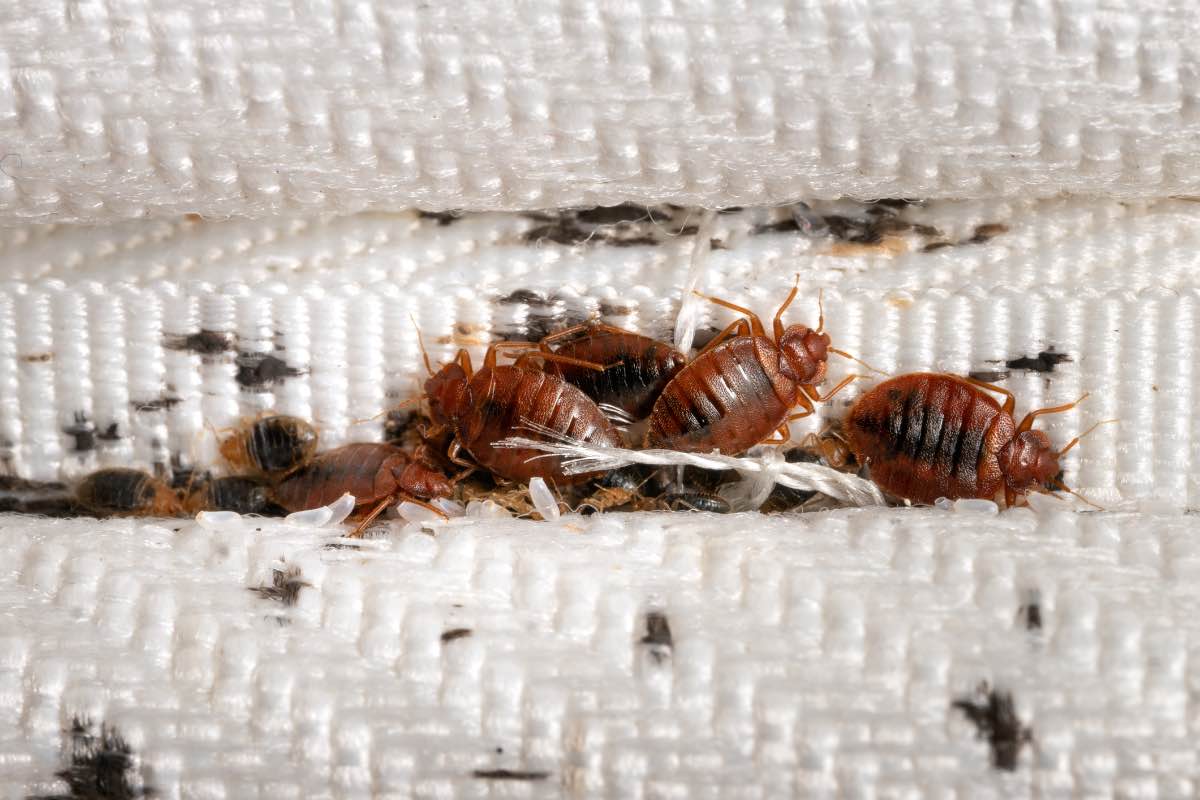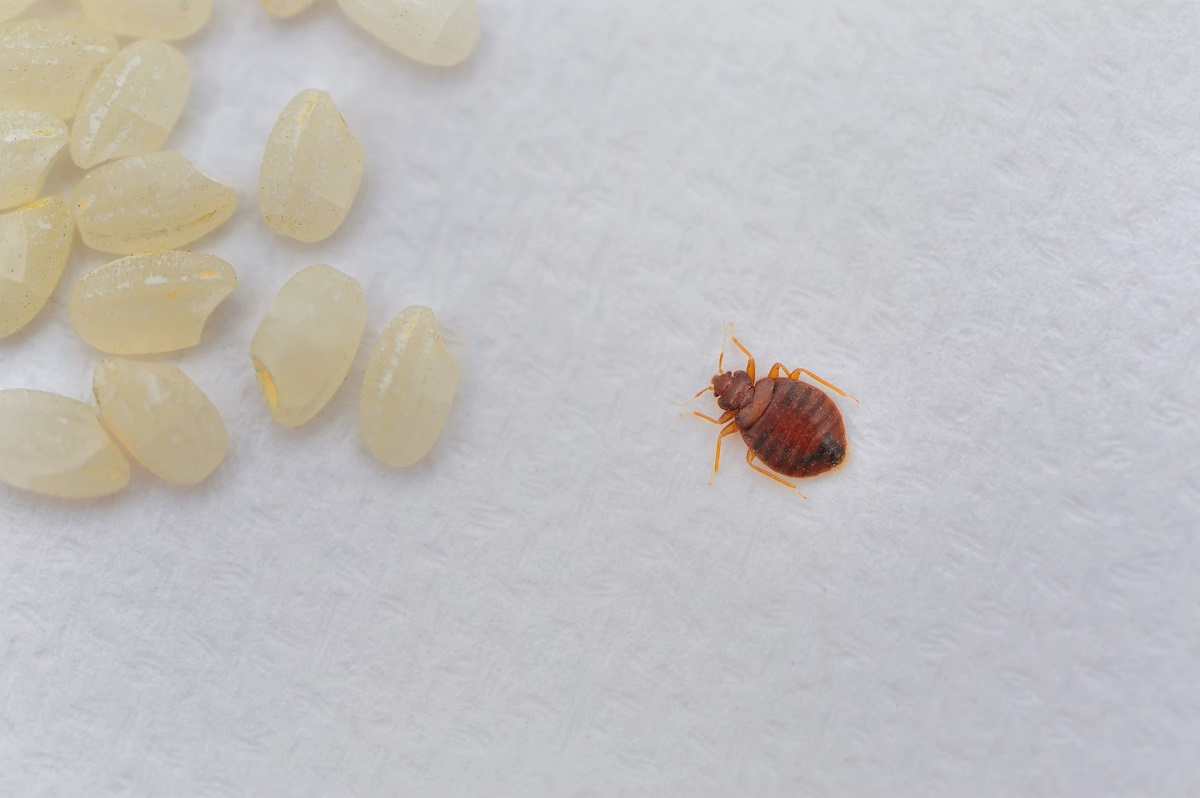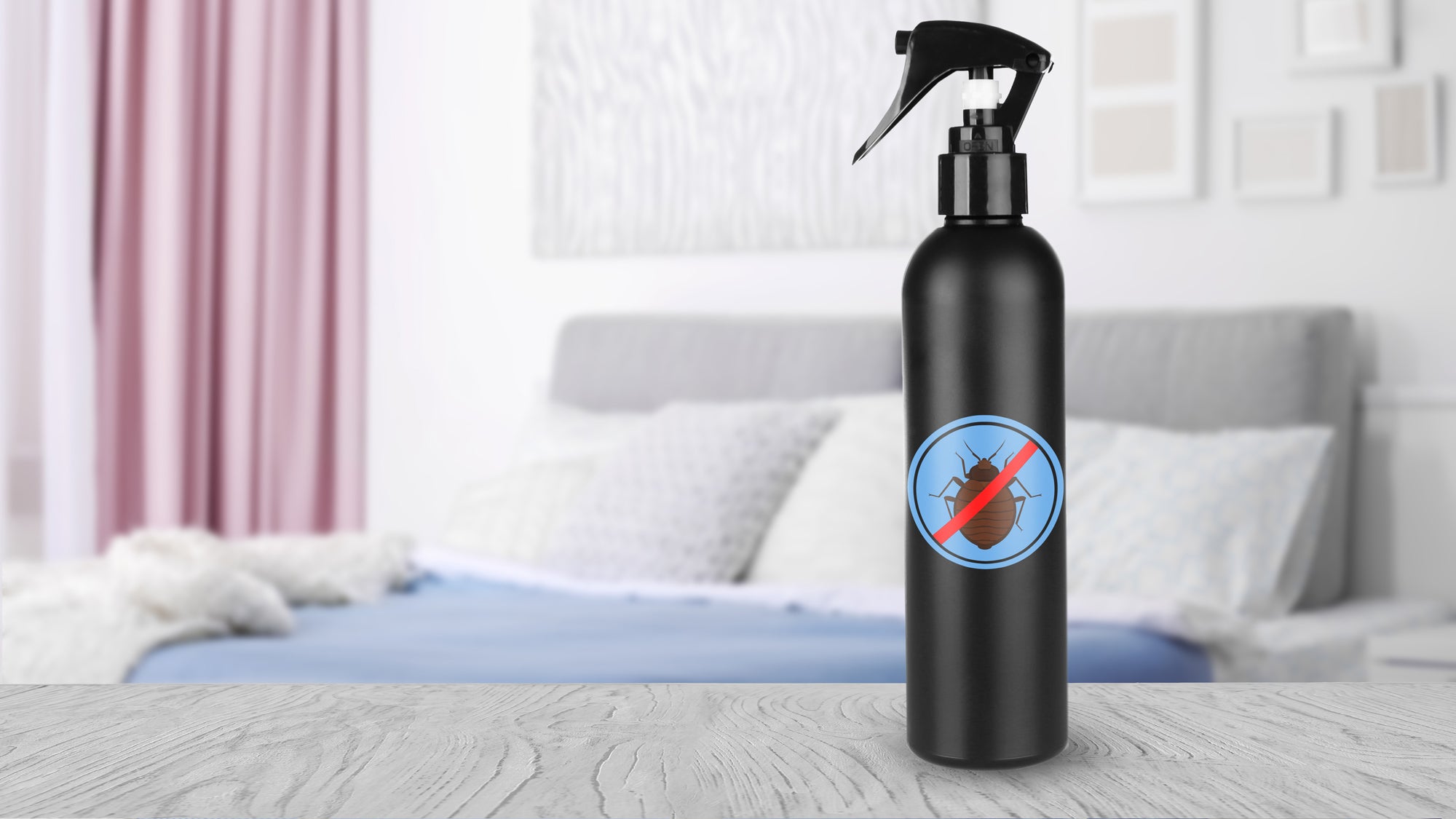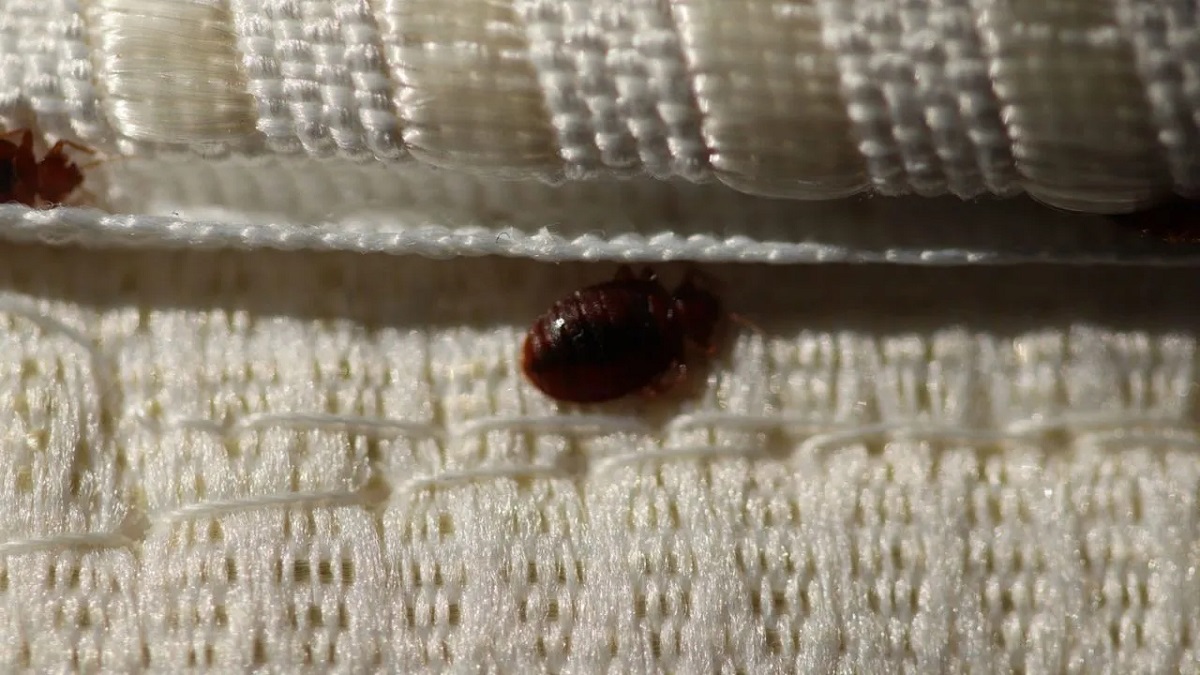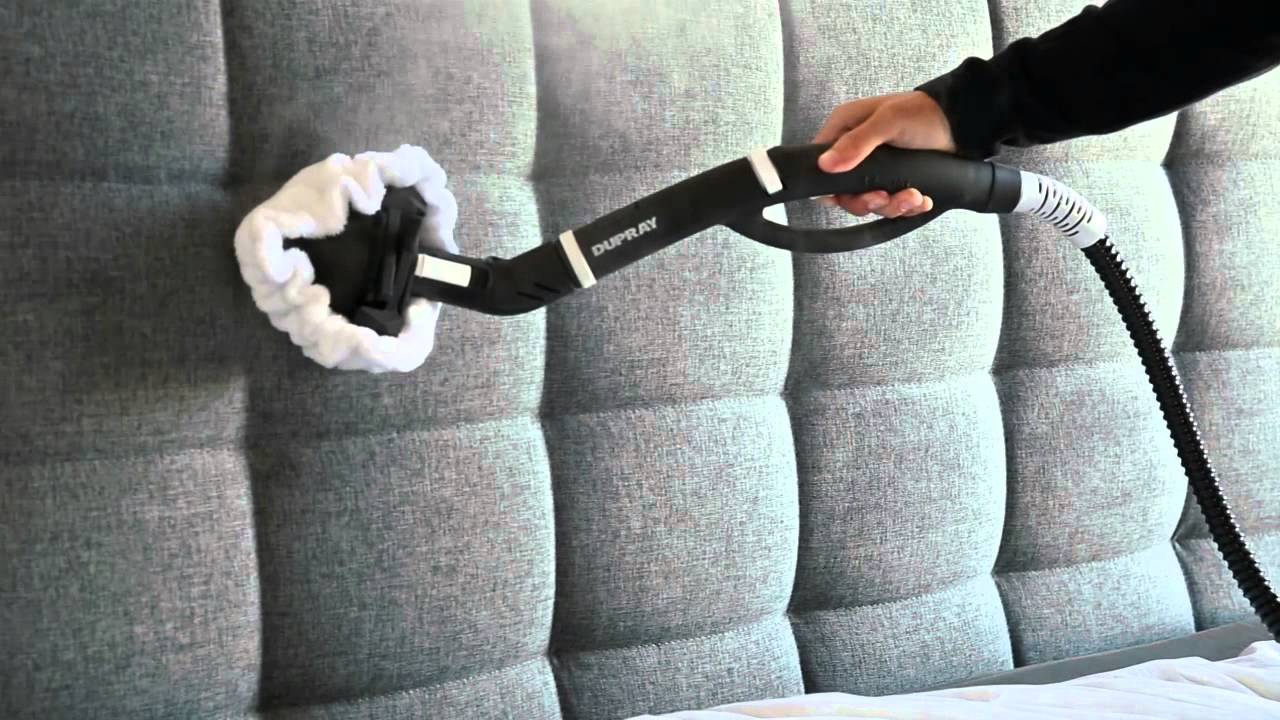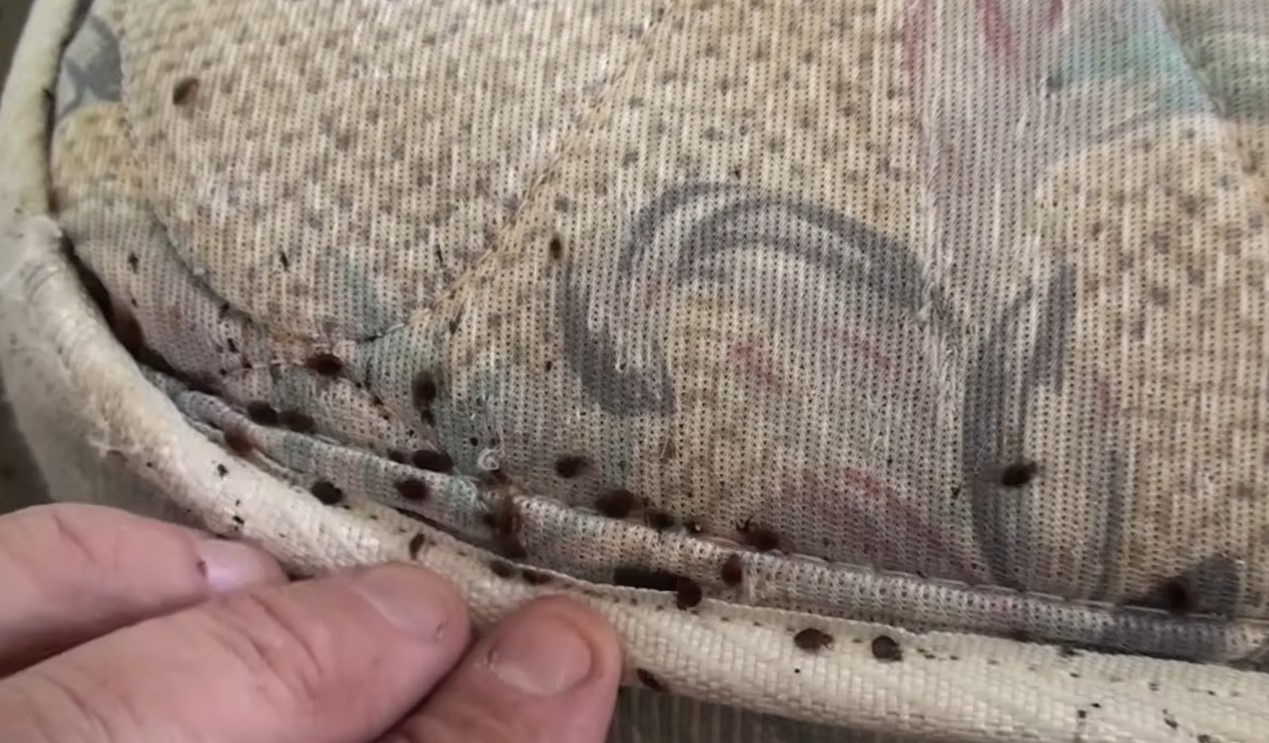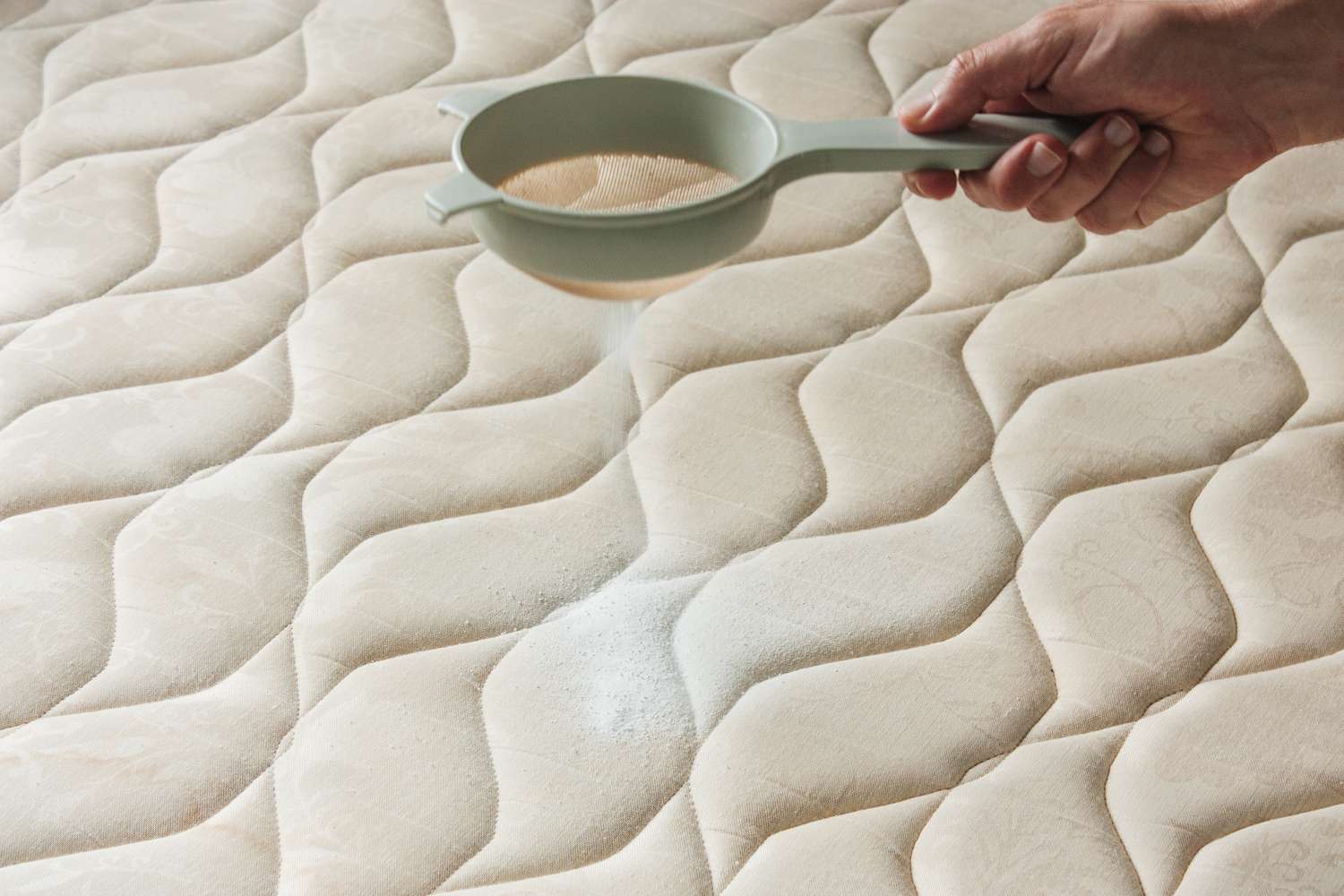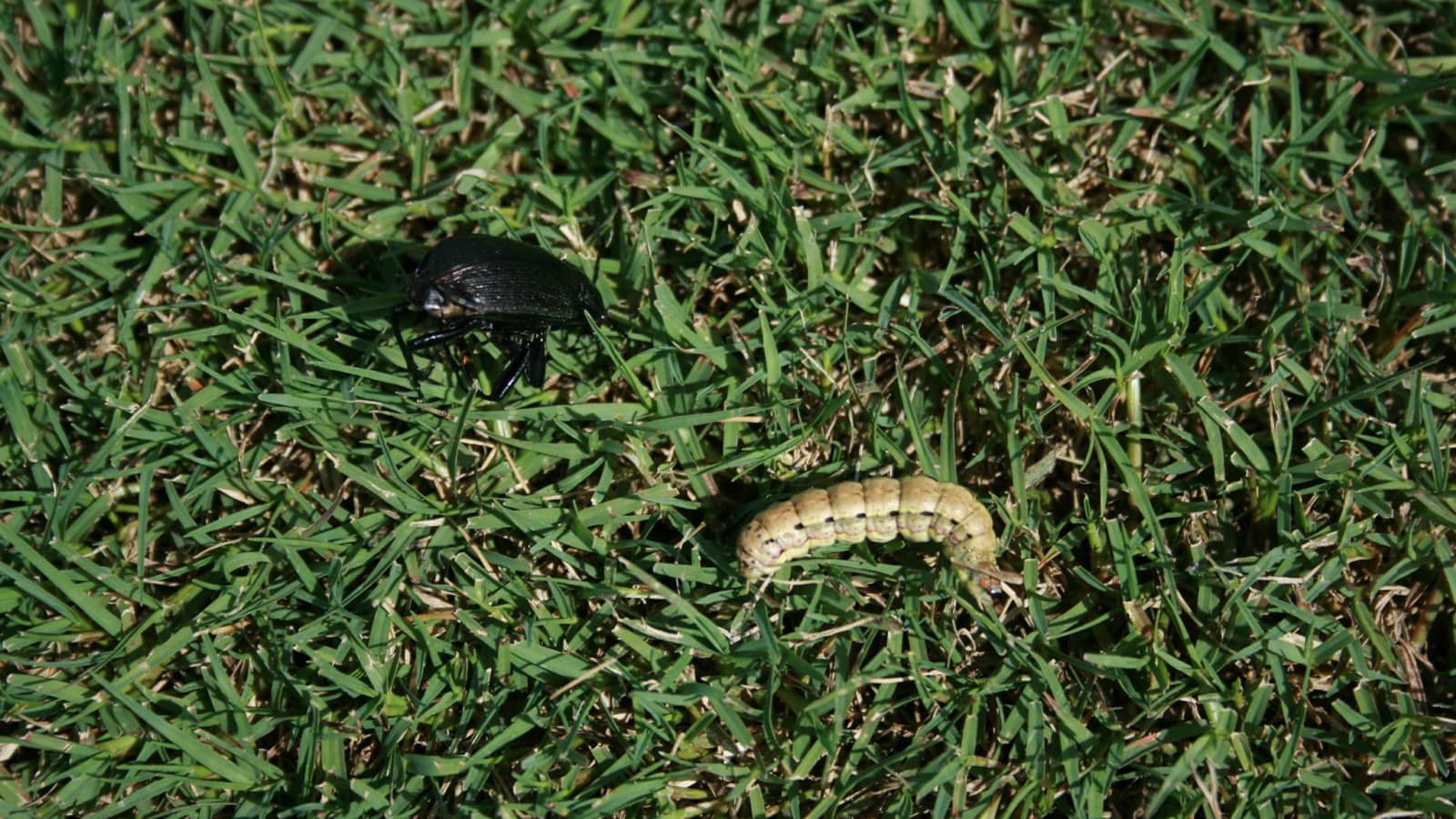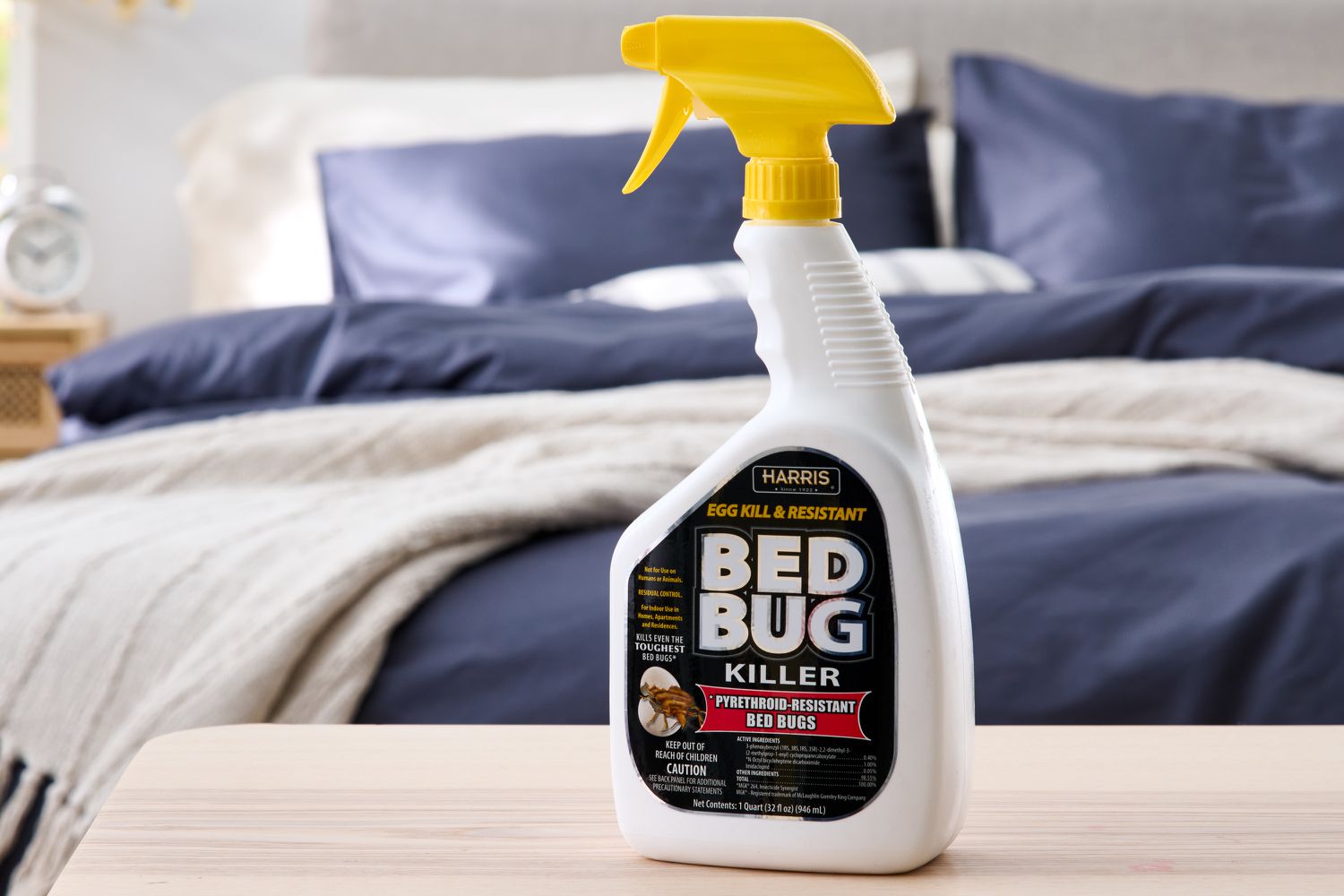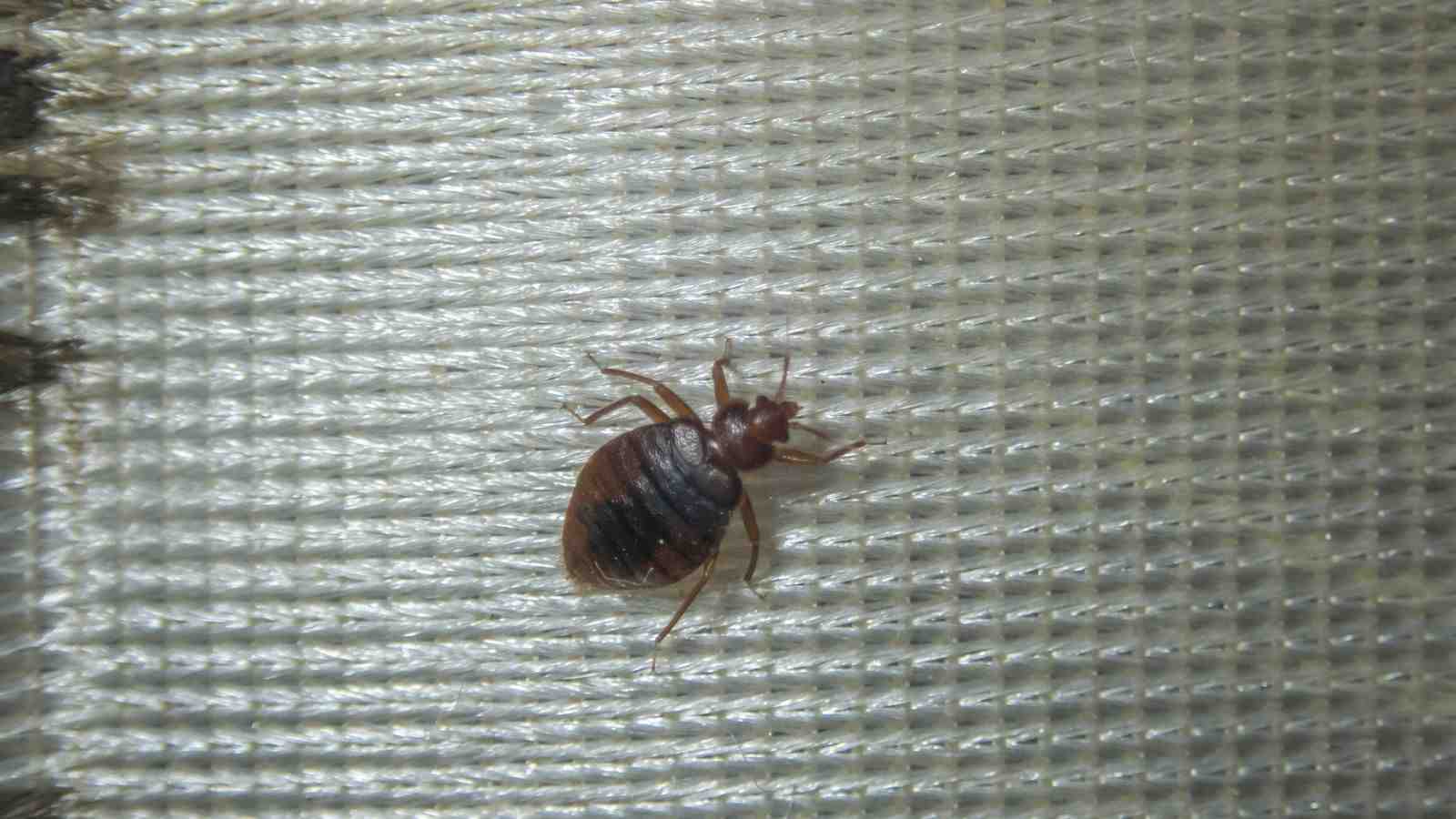Home>Furniture>Bedroom Furniture>How To Kill Bed Bugs Instantly
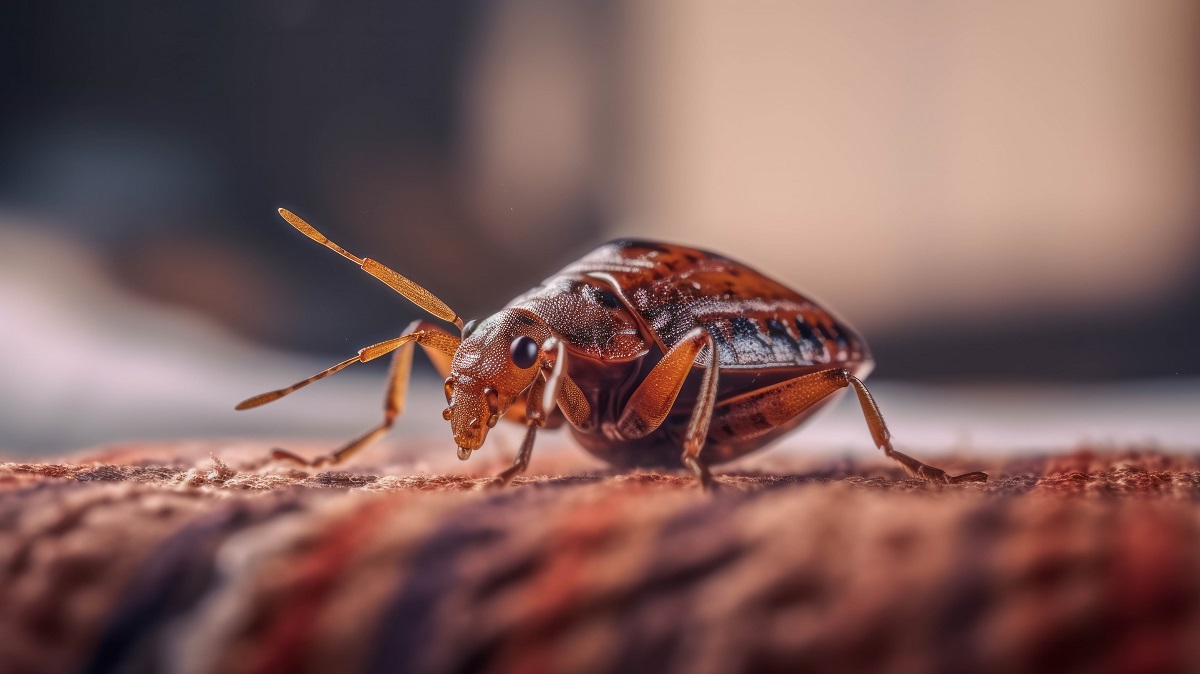

Bedroom Furniture
How To Kill Bed Bugs Instantly
Modified: October 28, 2024
Looking for an instant solution to kill bed bugs? Discover effective methods and tips on how to eliminate bed bugs from your bedroom furniture and keep your home bug-free.
(Many of the links in this article redirect to a specific reviewed product. Your purchase of these products through affiliate links helps to generate commission for Storables.com, at no extra cost. Learn more)
Introduction
Bed bugs are tiny, blood-sucking insects that can wreak havoc on your sleep and overall well-being. These pests are skilled at hiding in crevices and are difficult to eliminate once they infest your bedroom. However, with the right knowledge and strategies, you can regain control of your sleep sanctuary and eradicate these unwanted intruders.
In this article, we will explore various methods to kill bed bugs instantly and effectively. From identifying the signs of an infestation to implementing natural remedies and using insecticides, we will provide you with comprehensive insights to combat these persistent pests.
Dealing with a bed bug infestation can be a daunting task, but it’s not one you have to face alone. By combining your efforts with proven techniques, you can eliminate these insects and restore peace and comfort to your bedroom.
So, let’s dive in and discover how to tackle bed bugs head-on!
Key Takeaways:
- Don’t let bed bugs take over your sleep sanctuary. Learn to identify signs of infestation, prepare for treatment, and use natural remedies to combat these pests effectively.
- Stay proactive in preventing bed bug infestations by practicing caution when traveling, regularly inspecting your bedroom, and maintaining cleanliness and hygiene. If infestation persists, seek professional pest control assistance.
Read more: How To Kill A Bed Bug
Signs of Bed Bug Infestation
Bed bugs are expert hiders, making it important to know the signs of an infestation. Being able to identify these signs early on will help you take immediate action to eradicate the problem.
1. Bites: One of the most common signs of a bed bug infestation is waking up with itchy, red bite marks on your body. These bites are commonly found in rows or clusters on your arms, shoulders, neck, and legs.
2. Blood Stains: Bed bugs feed on human blood, and as a result, you may notice small, rust-colored stains on your sheets or pillowcases. These stains are the result of bed bugs being crushed while feeding.
3. Fecal Matter: Bed bugs leave behind dark, ink-like stains on your mattress, bedding, or furniture. These stains are a mix of their excrement and blood from previous feedings. Look for small black or brown spots on your sheets or mattress seams.
4. Musty Odor: Bed bugs emit a distinctive, musty odor. If you notice an unpleasant, sweet, or sickly scent in your bedroom that you cannot identify, it could be a sign of a bed bug infestation.
5. Shed Skins: As bed bugs grow, they shed their exoskeletons. These discarded skins, known as moltings, can be found in areas where bed bugs hide, such as mattress creases, cracks in furniture, or behind baseboards.
6. Live Bed Bugs: If you spot small, reddish-brown insects crawling on your bed, furniture, or walls, it is a clear indication of a bed bug infestation. Adult bed bugs are around the size of an apple seed and are visible to the naked eye.
It is important to note that while bed bugs are commonly associated with beds, they can also infest other areas in your bedroom, such as furniture, carpeting, and even electrical outlets. Therefore, it’s crucial to thoroughly inspect your entire bedroom if you suspect an infestation.
By recognizing these signs of a bed bug infestation, you can take swift action to prevent the problem from worsening and seek appropriate treatment.
Common Places Where Bed Bugs Hide
Bed bugs are notorious for their ability to hide in various nooks and crannies, making them difficult to detect and eliminate. Understanding their hiding spots can help you target their infestation more effectively. Here are some common places where bed bugs are known to hide:
1. Mattresses and Box Springs: Bed bugs usually seek refuge in the seams, tufts, and folds of mattresses and box springs. They can also hide inside the mattress itself, between the layers of fabric.
2. Bed Frames and Headboards: Bed bugs often find shelter in cracks and crevices of bed frames and headboards. These areas provide them with easy access to their food source.
3. Furniture: Upholstered furniture, such as couches, chairs, and recliners, are appealing hiding spots for bed bugs. They can hide in the seams, cushions, and even inside the furniture frames.
4. Carpets and Rugs: Bed bugs can live in the fibers of carpets and rugs, especially if they are close to the bed or furniture that they infest. They tend to hide in dark and undisturbed areas.
5. Curtains and Drapes: Bed bugs can also take refuge in the folds and pleats of curtains and drapes. Check these areas, particularly if they are near the sleeping area.
6. Electrical Outlets and Wall Gaps: Bed bugs can squeeze into tiny spaces, including electrical outlets and gaps in walls. They use these areas as transportation routes between different rooms.
7. Luggage and Personal Belongings: Bed bugs are hitchhikers and can easily latch onto your luggage or personal belongings. They hide in suitcases, backpacks, purses, and even clothing, enabling them to infest new environments.
It’s important to note that while these are some common hiding spots, bed bugs can infest any area of your bedroom or home. Vigilance and thorough inspection are crucial when trying to locate and eliminate these pests.
By having a comprehensive understanding of where bed bugs hide, you can focus your efforts on these areas during the treatment process and minimize the chances of a re-infestation.
Preparing for Bed Bug Treatment
Before you begin any bed bug treatment, it’s important to properly prepare your bedroom and surrounding areas. Adequate preparation can significantly improve the effectiveness of the treatment and help prevent bed bugs from spreading to other parts of your home. Here are the essential steps for preparing for bed bug treatment:
1. Declutter Your Bedroom: Remove any unnecessary clutter or items from your bedroom. Bed bugs love to hide in cluttered areas, so clearing your living space will make the treatment process more effective.
2. Launder Infested Items: Wash all bedding, clothing, and fabrics in hot water. Use the highest heat setting that is safe for the items and dry them on high heat as well. This will kill any bed bugs or eggs present on the fabrics.
3. Vacuum Thoroughly: Use a vacuum cleaner with a high-efficiency particulate air (HEPA) filter to thoroughly vacuum your mattress, box spring, bed frame, and other furniture. Pay close attention to seams, crevices, and any cracks where bed bugs may hide. After vacuuming, immediately remove and seal the vacuum bag in a plastic bag to prevent bed bugs from escaping.
4. Seal Cracks and Crevices: Fill in any cracks, crevices, or gaps in your walls, baseboards, and furniture using caulk or sealant. This will help eliminate potential hiding spots for bed bugs.
5. Encase Your Mattress and Box Spring: Invest in high-quality bed bug-proof mattress and box spring encasements. These protective covers will prevent bed bugs from infesting your bedding and make it easier to spot and eliminate any remaining bugs.
6. Remove Wall Hangings: Take down any wall hangings, such as pictures or mirrors, as bed bugs can hide behind them. Inspect and vacuum these items thoroughly before returning them to your bedroom.
7. Inform Your Neighbors: If you live in an apartment building or share walls with neighbors, it’s important to inform them about the bed bug infestation. This will enable them to take preventive measures and reduce the risk of re-infestation.
Remember, proper preparation is key to a successful bed bug treatment. By following these steps, you can maximize the effectiveness of the treatment and minimize the chances of a re-infestation.
Vacuuming can help to quickly reduce the number of bed bugs in your home. Focus on areas where bed bugs are likely to hide, such as mattresses, furniture, and baseboards. Dispose of the vacuum bag in a sealed plastic bag to prevent bed bugs from spreading.
Natural Remedies to Kill Bed Bugs
While professional extermination is often the most effective way to eliminate bed bugs, there are several natural remedies that can help in the battle against these pests. Here are some natural remedies to consider:
1. Diatomaceous Earth: Food-grade diatomaceous earth is a natural powder that can kill bed bugs by causing dehydration. Sprinkle a thin layer of diatomaceous earth along baseboards, in cracks and crevices, and around furniture legs. Repeat the application every few days and vacuum the area after a week.
2. Tea Tree Oil: Known for its insecticidal properties, tea tree oil can be an effective remedy against bed bugs. Mix a few drops of tea tree oil with water and spray the solution in infested areas, including bedding, mattresses, and furniture.
3. Lavender Oil: The strong scent of lavender oil can repel bed bugs. Add a few drops of lavender oil to a cotton ball and place it in areas where bed bugs are likely to hide, such as under the mattress or in closets.
4. Steam Treatment: Bed bugs cannot survive extreme heat. Using a steam cleaner, apply high-temperature steam to infested areas, including mattresses, furniture, and baseboards. The heat will kill bed bugs and their eggs.
5. Cold Treatment: Bed bugs are also sensitive to extreme cold. Place infested items in a sealed plastic bag and freeze them for at least 4 days. The freezing temperatures will kill bed bugs and their eggs.
6. Baking Soda: Baking soda can help dehydrate bed bugs. Sprinkle a generous amount of baking soda on your mattress, furniture, and carpets. Leave it for a few days, then vacuum the area thoroughly.
7. Essential Oils: Other essential oils like peppermint, eucalyptus, and neem oil are natural repellents for bed bugs. Dilute a few drops of these oils with water and spray the solution in infested areas.
Keep in mind that while natural remedies can be effective, they may not completely eliminate a severe infestation. It’s important to monitor the situation closely and consider professional extermination if the problem persists.
Additionally, ensure you follow safety precautions when using natural remedies, as some oils can cause skin irritation or allergic reactions. Always test a small area before widespread application.
Read more: How To Kill Bed Bugs On A Mattress
Using Insecticides to Eliminate Bed Bugs
Insecticides can be a powerful tool in the battle against bed bugs, particularly in cases of severe infestations. When using insecticides, it is essential to follow the instructions carefully and take necessary precautions to ensure the safety of yourself and others. Here are some steps to effectively use insecticides for bed bug elimination:
1. Identify the Infested Areas: Thoroughly inspect your bedroom and surrounding areas to identify the extent of the infestation. Focus on areas where bed bugs are likely to hide, such as mattresses, box springs, furniture, and cracks and crevices.
2. Choose the Right Insecticide: There are various types of insecticides available for bed bug control, including sprays, powders, and aerosols. Read the labels carefully and choose a product specifically formulated for bed bug elimination.
3. Prepare the Area: Remove clutter and vacuum the infested areas to remove any loose bed bugs, eggs, or debris. Take precautions to protect yourself by wearing gloves, long sleeves, and a mask.
4. Apply the Insecticide: Follow the instructions on the insecticide label for proper application. Spray or apply the insecticide directly onto infested areas, paying close attention to seams, folds, crevices, and other hiding spots. Ensure that you cover all surfaces where bed bugs are likely to be present.
5. Treat Adjacent Areas: It’s crucial to treat not only the infested areas but also the surrounding areas where bed bugs may have spread. This includes baseboards, carpets, curtains, and nearby furniture. Remember to maintain proper ventilation and avoid over-saturating surfaces.
6. Repeat the Treatment: Bed bugs are resilient pests, and a single application of insecticide may not be enough to eliminate them completely. Most insecticides require follow-up treatments to target newly hatched bed bugs and eggs. Follow the recommended treatment schedule provided on the product label.
7. Monitor and Take Preventive Measures: After the treatment, monitor the area for any signs of remaining bed bugs. Vacuum regularly and maintain good hygiene practices in your bedroom. Consider using bed bug-proof mattress and pillow encasements to prevent re-infestation.
It is important to note that insecticides can be toxic if not used correctly. Always follow the safety precautions and guidelines provided by the manufacturer. If you are unsure about using insecticides, consult a professional pest control company that specializes in bed bug eradication.
Remember, the key to successful insecticide use is thorough application, repeat treatments, and ongoing preventive measures to ensure long-term elimination of bed bugs.
Preventing Bed Bug Infestations
Preventing bed bug infestations is essential to ensure a restful sleep environment and avoid the hassle and expense of dealing with an infestation. While bed bugs can be resilient and challenging to completely prevent, there are several proactive measures you can take to minimize the risk. Here are some effective strategies for preventing bed bug infestations:
1. Be Cautious When Traveling: Bed bugs are expert hitchhikers and can easily be transported through luggage, clothing, and other personal items. When staying in hotels or other accommodations, inspect the room thoroughly for signs of bed bugs. Keep your luggage elevated on luggage racks and away from the bed and furniture.
2. Regularly Inspect Your Bedroom: Conduct routine inspections of your bedroom, including the mattress, box spring, and furniture, for any signs of bed bugs. Pay attention to the telltale signs such as blood stains, fecal matter, shed skins, and live bugs.
3. Use Protective Covers: Encase your mattress, box spring, and pillows with bed bug-proof covers. These covers create a barrier that prevents bed bugs from infesting these items and makes it easier to detect and eliminate any bugs that may be present.
4. Declutter Your Living Space: Minimize clutter in your bedroom and surrounding areas as bed bugs can hide in cluttered spaces. Keep the floor clear and avoid storing items underneath the bed, as it provides easy access for bed bugs.
5. Practice Cleanliness and Hygiene: Regularly clean and vacuum your bedroom and living areas to remove any potential hiding spots for bed bugs. Pay particular attention to cracks and crevices, baseboards, and furniture seams. Launder your bedding, clothing, and fabrics regularly in hot water to kill any potential bed bugs.
6. Avoid Secondhand Furniture: Be cautious when acquiring used furniture, particularly mattresses, box springs, and upholstered items. Inspect them thoroughly for any signs of infestation before bringing them into your home.
7. Educate Yourself: Stay informed about bed bugs and their behavior. Learn how to identify the signs of an infestation and know what steps to take in case you suspect an issue. Knowledge is your best defense against bed bugs.
If you live in an apartment building or have shared walls, it’s crucial to communicate with your neighbors about any bed bug issues. Cooperation among neighbors can help prevent the spread of bed bugs and enable prompt action if an infestation occurs.
Remember, while prevention is important, early detection is key. Act swiftly if you notice any signs of bed bugs to prevent a small infestation from becoming a widespread problem.
Conclusion
Dealing with a bed bug infestation can be a frustrating and stressful experience, but with the right knowledge and strategies, you can regain control of your bedroom and eliminate these unwanted pests. In this article, we have explored various methods to kill bed bugs instantly and effectively, from identifying the signs of an infestation to implementing natural remedies and using insecticides.
By recognizing the signs of a bed bug infestation early on, you can take immediate action to prevent the problem from worsening and seek appropriate treatment. Knowing where bed bugs hide can help you target their infestation more effectively, ensuring that you don’t miss any potential hiding spots.
Preparing your bedroom for treatment is crucial to make the process more effective. By decluttering, laundering infested items, vacuuming thoroughly, and encasing your mattress and box spring, you can create an environment that is favorable for treatment success.
While natural remedies can help in the battle against bed bugs, severe infestations may require the use of insecticides. When using insecticides, it is important to follow the instructions carefully and take necessary safety precautions to protect yourself and others.
Prevention plays a crucial role in avoiding bed bug infestations. By practicing caution when traveling, regularly inspecting your bedroom, using protective covers, decluttering your living space, and maintaining cleanliness and hygiene, you can minimize the risk of bed bugs finding their way into your home.
In conclusion, eradicating bed bugs requires a combination of proactive prevention, early detection, and appropriate treatment measures. By staying informed, being vigilant, and taking prompt action, you can reclaim your sleep sanctuary and prevent future bed bug infestations.
Remember, if you are facing a severe infestation or have difficulty eliminating bed bugs on your own, it is recommended to seek assistance from professional pest control experts who specialize in bed bug extermination.
Frequently Asked Questions about How To Kill Bed Bugs Instantly
Was this page helpful?
At Storables.com, we guarantee accurate and reliable information. Our content, validated by Expert Board Contributors, is crafted following stringent Editorial Policies. We're committed to providing you with well-researched, expert-backed insights for all your informational needs.
